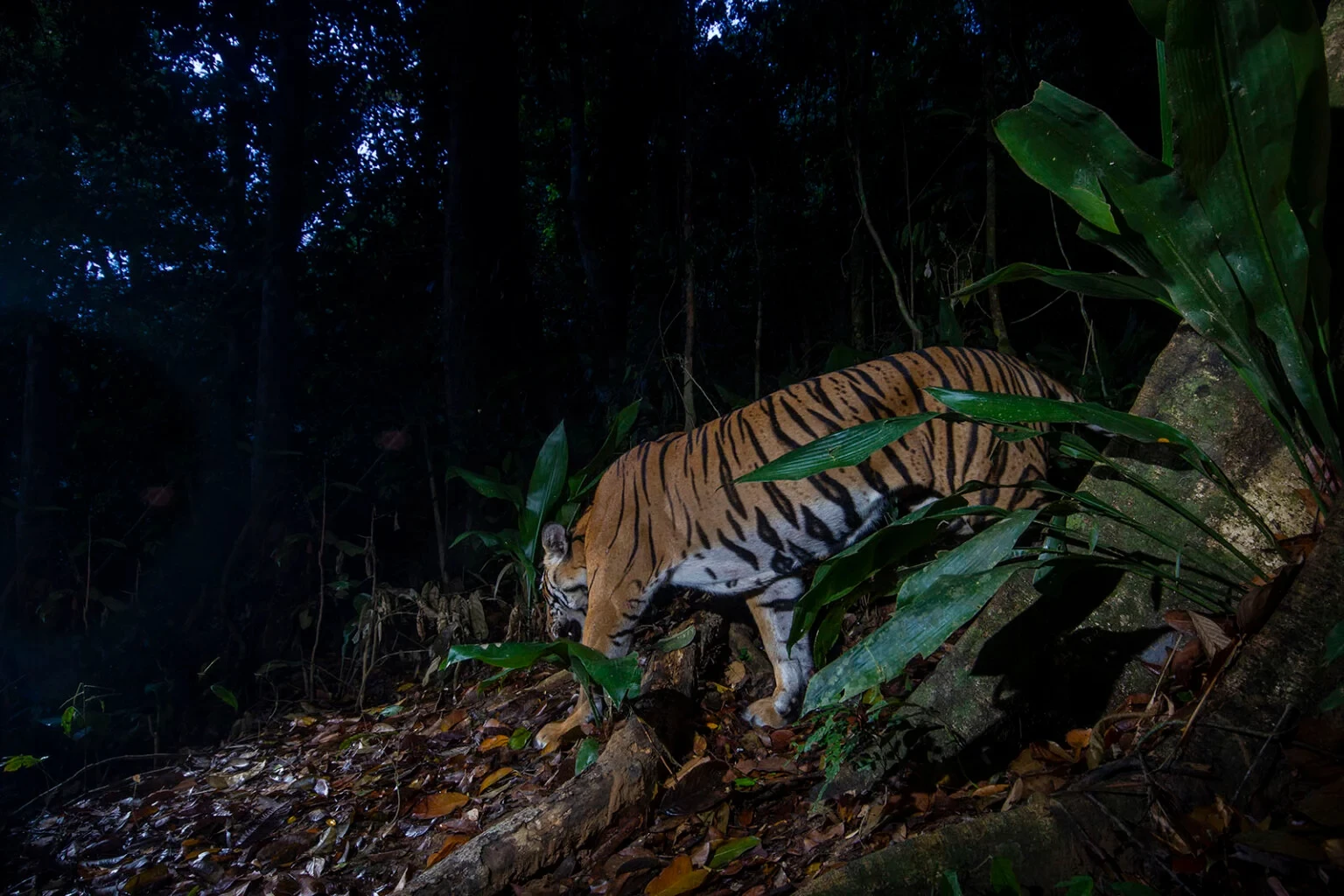Camera Trap Captures Stunning Photos Of Ultra Rare Malayan Tiger And New Hope For This Endangered Species
 Source: Emmanuel Rondeau
Source: Emmanuel Rondeau
According to the World Wildlife Fund, with their population plummeting from around 3,000 in the 1950s to fewer than 150 as of last year, the urgency of conservation efforts becomes evident more than ever. Even as recently as 2010, that number was estimated at 500.
This species, now classified as "Critically Endangered" on the International Union for Conservation of Nature Red List, is granted "Totally Protected" status under Malaysia's Wildlife Conservation Act of 2010.
Malaysia's lush landscapes, once home to a thriving population of Malayan tigers, are now witnessing a poignant struggle for survival. Because of this, there are various conservation efforts to protect the animals in their native Malaysia
 Source: Emmanuel Rondeau
Source: Emmanuel Rondeau
The World Wildlife Fund (WWF) collaborates with wildlife photographer Emmanuel Rondeau to unveil a stunning sighting of one and the challenges faced by these rare creatures through the lens of camera traps.
Rondeau's photographic journey delves into the heart of Malaysia's forests, capturing not only the rare Malayan tigers but also offering a glimpse into the lives of other native species facing the challenges of coexistence in a rapidly changing environment.
 Source: Emmanuel Rondeau
Source: Emmanuel Rondeau
“In Malaysia, the decline of our tigers reflects the complex challenges confronting these magnificent creatures throughout Southeast Asia,” Sophia Lim, Executive Director and CEO of WWF-Malaysia, explains in a news release.
She also emphasizes the rarity of capturing a photo of a Malayan tiger in its natural habitat. “Capturing a photo of a Malayan tiger in its natural habitat is a rarity, yet each image serves as a source of hope and a poignant reminder of the ongoing efforts required to safeguard its existence."
 Source: Emmanuel Rondeau
Source: Emmanuel Rondeau
Camera traps, equipped with sensors triggered by infrared signals, offer an ideal means of capturing images of endangered animals because they are less invasive than having a photographer embedded in a creature’s habitat.
“Royal Belum State Park is one of the country’s last strongholds of tigers,” a WWF release reads. “Increasing tiger populations in Malaysia is by no means impossible and would be a historic achievement. But it requires political will, sustainable financing, and support from Indigenous Peoples and local communities.”
 Source: Emmanuel Rondeau
Source: Emmanuel Rondeau
The images not only show the tigers but also highlight the anti-poaching initiatives undertaken by groups to protect natural wildlife.
In this park, a dedicated anti-poaching patrol has become hope in the battle against the decline of tiger populations.
“In Royal Belum State Park today, there are 60 patrol team members, made up of Indigenous Peoples from community members in the area. They have already proved essential in reducing active snares by 98 percent inside the park,” says the WWF.
 Source: Emmanuel Rondeau
Source: Emmanuel Rondeau
These photos show other big cats, including black leopards, also known as black panthers, and the tree-dwelling clouded leopard. Pictures also show the sun bear and the Malay tapir.
The collective efforts of anti-poaching teams stand as a testament to the resilience of Malaysia's natural heritage and the determination to preserve it for future generations. For more amazing stories about animals, visit AUBTU.BIZ now!
Related Articles
- Gorilla Tries To Run Into Cold Water, Regrets It, And Then Acts Cool As If Nothing Bad Happened
- The Heartwarming Tale Of Gentle Outcast Cat's Journey From The Streets To Loving Home In NYC
- Cat Left Behind In Apartment When His Family Moved Is Happy When Finally Adopted After 5 Months Of Waiting
- Man Out Paddle Boarding Suddenly Realizes He Has Chance Encounter With A Very Curious Manatee
- Woman Finds Flowers All Over Bedroom Every Day - Then Relizes They Were Left By A Secret Admirer
- This Man Stops To Rescue 'Angry' Animal In The Road—And Ends Up Making A Friend
- Photographer Spots A Haunting Face Pleading For Help On Beach
- Shoppers Are Completely Stunned As They Spot A Face Pleading For Help At Store’s Glass Door
- Couple Adopts Bulldog Who Looks Similar To Their Pet and Gets A Big Surprise
- Man Sets Up Owl Nesting Box, Then Surprisingly Discovers Fluffy Visitor Inside